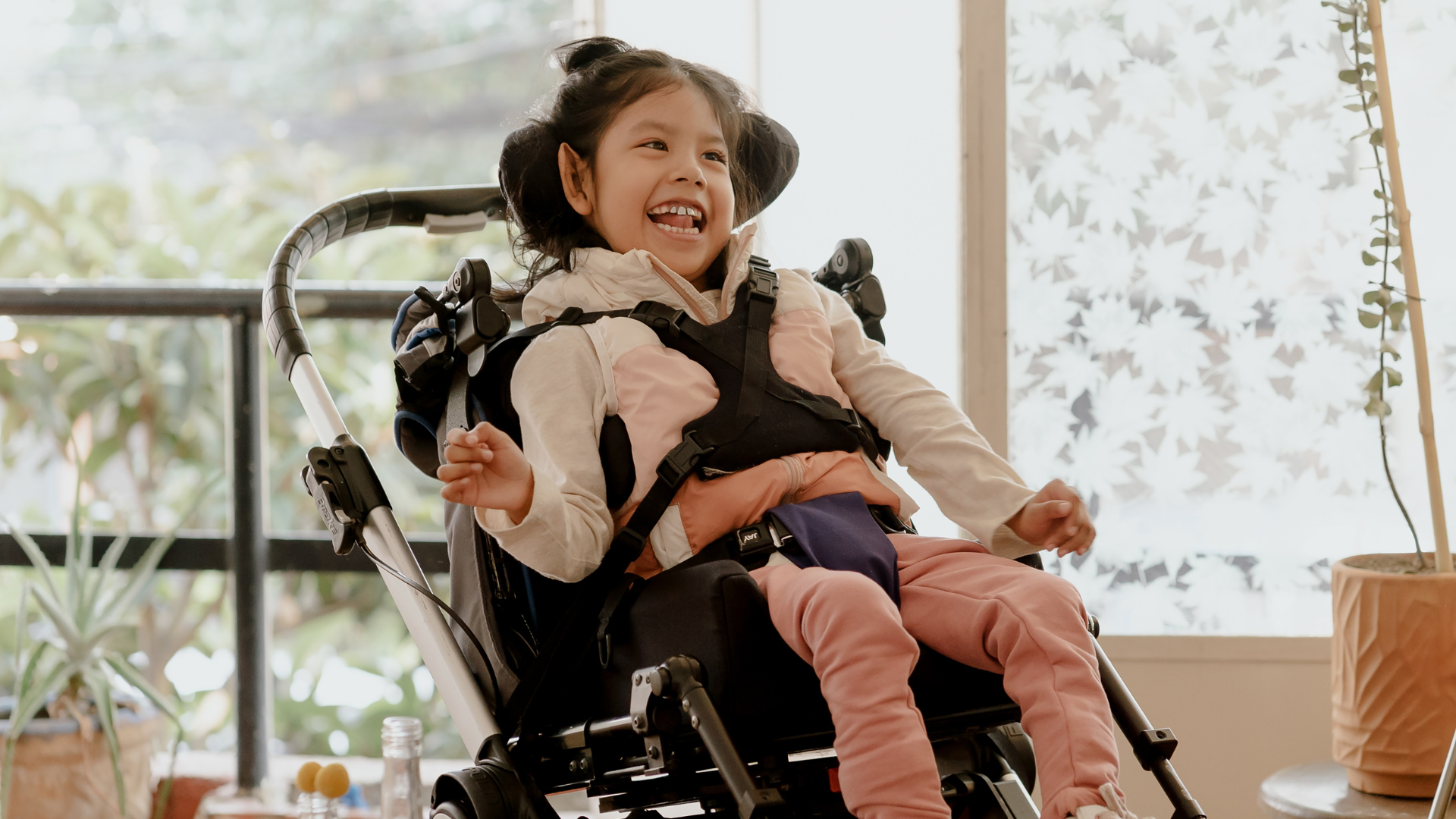Powered mobility for children is a well-researched and accepted method of providing self-initiated mobility. Powered mobility (PM) devices can facilitate independent exploration of the environment and provide a functional means of locomotion for children with mobility limitations.
There is great evidence to support that by exploring their environment, positive changes can occur regarding a child’s overall development including cognition, language, social and motor development (Jones et al., 2012). It has also been shown that very young children under the age of 24 months are able to learn the skills to operate a PM device (Dunaway et al., 2012). Of course, children, just like any other clients we work with, are very diverse in terms of their physical, functional, cognitive and perceptual abilities. Therefore, the therapist must tailor the training approach, or approaches, to each child. Although there are many benefits of PM use, training children to successfully and safely maneuver such devices can be a challenge and requires patience. There are many theories and ideas regarding best practice for training children in use of his or her powered mobility device. The following are evidence informed methods that could be utilized during training for best outcomes and functional use of the powered mobility device.
Natural environment: Training should occur not only in the clinical setting, but also in the natural environment with a balance of fun, exploratory, and instructional activities (Nisbit, 2002). Evidence shows that children with profound physical disabilities may be able to gain independence in use of PM by practicing driving skills in his or her home environment with family support (Jones, McEwen, and Neas, 2012).
Extended training time/opportunities: Children need frequent interaction to become acquainted with the device, and sufficient time to develop the skills necessary for safe and functional use (Nisbit, 2002). Long-term training and practice are necessary for retention of skills and carryover of learning for functional mobility (Ragonesi & Galloway, 2012).
Child-centered approach: This is the idea that children participate in self-directed mobility to explore their environment independently with limited adult interference. The child takes the lead on use of the mobility device, and the supervising adult sets up the environment for the child’s success (Durkin, 2009).
Advancing technology: Virtual reality is gaining popularity in the field of assistive technology. This training method is interactive and entertaining, which has been shown to be motivating for the child’s participation. Through virtual reality children can learn the skills necessary to safely and successfully maneuver the powered mobility device (Rose, Nam & Chen, 2018).
The Rehabilitation Engineering and Assistive Technology Society of North America (RESNA) position paper on powered mobility for children highlights key points, including the below. The following are accomplished through a thorough evaluation and equipment trials by the clinical team with the child.
- Prior to training, one must consider expectations, driving method, and wheelchair programming to provide most appropriate environment for the child.
- Children with diverse abilities and needs will respond differently to various input methods. Joysticks, switches, or head controls could be used to help the child learn to independently initiate movement.
- Program the wheelchair to provide the optimal balance of responding to the child’s movements without being too jarring to decrease the possibility of eliciting a startle response. This balance will be crucial in allowing the child to realize the cause-and-effect relationship of moving the input device.
When you are ready to start letting the child learn to drive, it is important to keep the following in mind:
- Allow the child to independently interact with the PM device with few verbal cues to enable self-led learning. One person at a time should give the child instructions, and instructions should be simple and clear.
- Training should occur in quiet, familiar environments with limited distractions.
- Utilize a stop button or stay within range to turn the PM device off.
- Allow children to safely run into objects when learning. This will help to develop depth perception and judgment.
- Training sessions can vary in time – from 15 minutes to two hours – depending on the child’s needs, frustrations, and fatigue level (RESNA, 2017).
- Remain positive to reinforce new learning.
By designing a proper training program based on the individual needs of each child, they have the potential to acquire the skills needed for safe and successful use of their PM device. Considering all aspects of the child’s context such as body function, family situation, environment, and social context is vital in facilitating maximum acceptance and functional use of their mobility device. When working with children, keep sessions fun with play as the foundation for all learning!

author
Jill Marlow
OTD/S
Jill Marlow partnered with Numotion to gain advanced practice skills in wheelchair provision. Jill has a strong passion for assistive technology and seating/mobility and has focused her research on this topic.
References
Dunaway, S., Montes, J., O’Hagen, J., Sproule, D. M., Vivo, D. C. D., & Kaufmann, P. (2013). Independent mobility after early introduction of a power wheelchair in spinal muscular atrophy. Journal of child neurology, 28(5), 576-582.
Durkin, J. (2009). Discovering powered mobility skills with children: ‘Responsive partners’ in learning. International Journal of Therapy and Rehabilitation, 16(6), 331-341.
Jones, M., McEwen, I., & Neas, B. (2012). Effects of power wheelchairs on the development and function of young children with severe motor impairments. Pediatric Physical Therapy, 24(2), 131–140.
Nisbet, P. D. (2002). Assessment and training of children for powered mobility in the UK. Technology and Disability, 14(4), 173-182.
Ragonesi, C. B., & Galloway, J. C. (2012). Short-term, early intensive power mobility training: case report of an infant at risk for cerebral palsy. Pediatric Physical Therapy, 24(2), 141.
Rose, T., Nam, C. S., & Chen, K. B. (2018). Immersion of virtual reality for rehabilitation-Review. Applied Ergonomics, 69, 153-161.
Rosen, L., Plummer, T., Sabet, A., Lange, M. L., & Livingstone,
R. (2017). RESNA position on the application of power mobility devices for pediatric users. Assistive Technology, (just-accepted).



